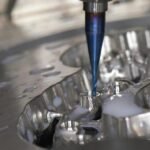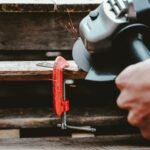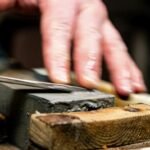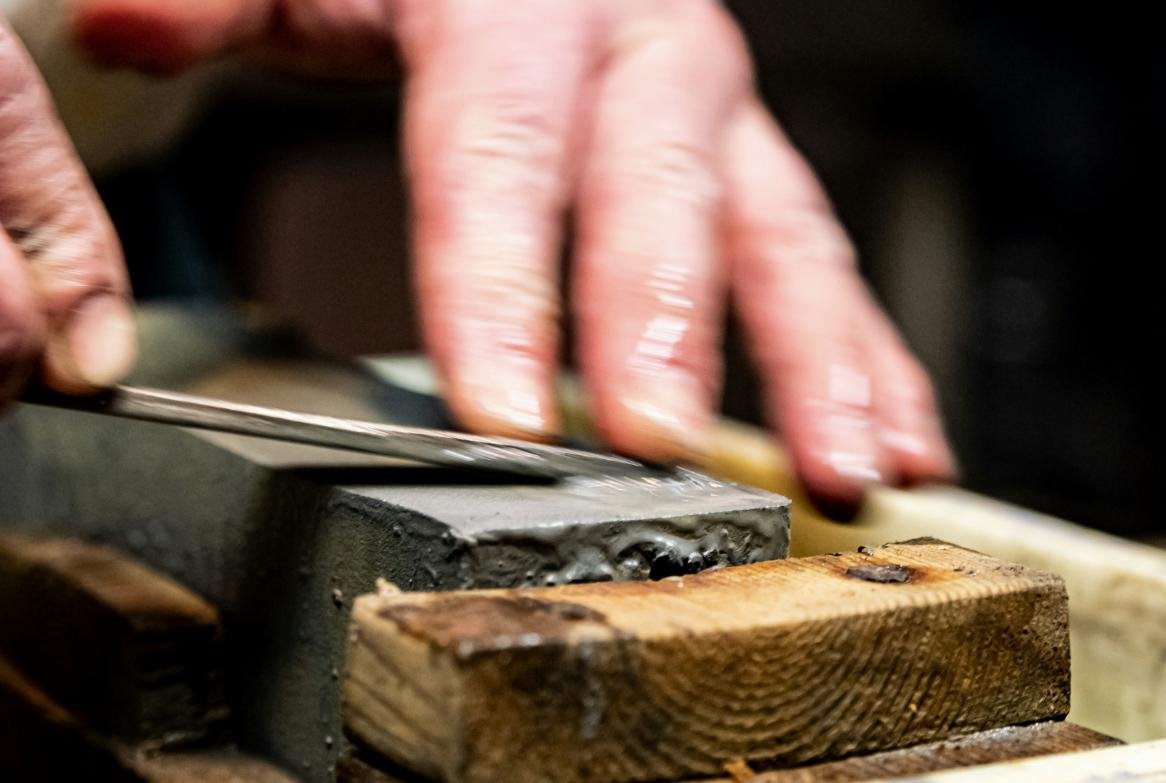Introduction to Knife Sharpening
Knife sharpening is a crucial skill every home cook and professional chef should master to ensure the longevity and efficiency of their kitchen utensils. Over time, knives lose their edge, leading to decreased performance, increased risk of accidents, and a less enjoyable cooking experience. Consequently, understanding the importance of knife sharpening can greatly impact both the safety and quality of food preparation.
There are several techniques for sharpening knives, each offering unique benefits. The most common methods include using honing rods, whetstones, and electric sharpeners. Honing rods are often employed as a maintenance tool; they realign the blade’s edge, optimizing its performance between more intensive sharpening sessions. Whetstones, on the other hand, provide a more traditional approach by grinding the blade to restore its sharpness. Electric sharpeners offer convenience and speed, suitable for those who desire quick results without extensive knowledge of sharpening techniques.
The method chosen often depends on the knife’s material, personal preference, and skill level. For instance, softer steel knives may require a more gentle approach, while harder steels may benefit from a more aggressive sharpening process. Additionally, some chefs prefer to use specific angles when sharpening to achieve a desired blade characteristics, whether for slicing delicate ingredients or for robust chopping tasks.
Understanding the significance of knife sharpening not only equips individuals with essential kitchen skills but also raises an important question regarding post-sharpening care. As knives undergo sharpening, they may accumulate metal shavings and particulate matter. This leads to the central inquiry of whether it is necessary to wash a knife after sharpening, which will ultimately be addressed in this guide. Proper maintenance of kitchen tools ensures that they remain both safe and effective for cooking needs.
Understanding the Sharpening Process
Knife sharpening is an essential skill for maintaining the effectiveness of cutting tools. The process involves refining the blade’s edge to restore its sharpness and performance. Various tools are employed in knife sharpening, with whetstones and sharpening steels being among the most popular options. Whetstones come in varying grits, allowing users to either reshape the blade significantly or polish it for a finer edge. Conversely, sharpening steels, often made of ceramic or metal, serve to realign the edge rather than remove substantial material.
The sharpening process can be broken down into several key components. Initially, the blade is assessed for wear and damage, identifying areas requiring attention. As sharpening commences, metal from the blade is gradually worn away, creating fine shavings and debris that accumulate during the procedure. This buildup is primarily composed of tiny metal particles released from the blade as it meets the abrasive surface of the whetstone or sharpening steel. Not only does this debris affect the sharpening efficiency, but it can also result in a less-than-optimal finish if left unattended.
Additionally, different metals used in knife construction have distinct properties influencing the sharpening process. High-carbon stainless steel, for example, is favored for its ability to hold a sharp edge, yet it may require specific sharpening techniques to achieve desired results. Similarly, certain serrated blades necessitate a different approach to effectively maintain their cutting capability. While sharpening can significantly enhance the performance of a knife, it is essential to remove the accumulated metal shavings and debris afterward to ensure the blade’s longevity and effectiveness during subsequent use.
Why Cleaning is Important
Ensuring proper hygiene in the kitchen is essential, especially when it comes to handling kitchen tools such as knives. Knives are among the most frequently used utensils in food preparation, and maintaining their cleanliness is paramount for both hygiene and food safety. Any food particles or contaminants left on a knife can lead to cross-contamination during meal preparation, posing potential health risks to those consuming the food. This is particularly critical for knives used to chop raw meats, fish, or produce, as any trace of bacteria can easily be transferred to other ingredients.
Moreover, cleaning knives after sharpening is equally significant. The sharpening process often generates fine metal shavings and debris that can cling to the blade. These particles, while seemingly innocuous, can pose risks if ingested, making it crucial to remove them thoroughly before the knife is put back into use. If these contaminants are not cleaned off, they could end up in the food, potentially resulting in adverse health effects.
Furthermore, cleaning a knife after sharpening helps maintain its performance and longevity. Residues from the sharpening process can lead to corrosion or tarnishing of the blade over time, affecting its sharpness and effectiveness. Regular cleaning not only ensures the knife remains safe for culinary use but also preserves its overall condition, extending its lifespan and usability in the kitchen.
In conclusion, cleaning knives after any food preparation, including after sharpening, is critical for maintaining hygiene and food safety. It prevents cross-contamination, protects against health risks, and enhances the longevity of the knife. Therefore, adopting a consistent cleaning routine is essential for every kitchen enthusiast.
What Happens if You Don’t Wash the Knife?
Failing to clean a knife after sharpening can lead to several adverse consequences that may affect both food safety and the knife’s performance. One of the primary concerns is the risk of food contamination. When a knife is sharpened, fine metal particles can detach from the blade and remain on its surface. If the knife is not washed and is subsequently used for food preparation, these residual particles can inadvertently be transferred to the food, posing potential health hazards. Consuming metal shavings is not only unappetizing but may also lead to serious health complications, especially for sensitive individuals or those with specific dietary restrictions.
Additionally, the accumulation of sharpening residue can impact the knife’s effectiveness over time. Knives are designed for precision cutting, and any leftover particles can obstruct this functionality. The presence of these particles can create resistance and hinder the knife’s smooth operation. This resistance may require more effort when slicing, leading to an inconsistent cut and an overall diminished cutting experience. Over time, this could necessitate more frequent sharpening, eroding the blade’s integrity and potentially resulting in a shorter lifespan for the knife.
Moreover, neglecting proper maintenance after sharpening can influence the knife’s overall hygiene. Knives are a significant tool in the kitchen, and any neglect in cleaning can contribute to bacteria buildup, especially if the knife is stored without being washed. This situation can lead to cross-contamination with other kitchen tools or food items. In light of these factors, it is crucial to prioritize the washing of knives after sharpening to ensure safety, maintain optimal cutting performance, and uphold hygienic cooking practices. Regular cleaning habits can significantly prolong the life of your knife while ensuring safe food preparation.
Best Practices for Cleaning a Knife Post-Sharpening
Cleaning a knife after sharpening is an essential step in maintaining both the knife’s integrity and the hygiene of your kitchen. The best practice involves thorough hand washing rather than placing the knife in a dishwasher, as high temperatures and harsh detergents can dull the blade. Begin the cleaning process with warm, soapy water; use a mild dish detergent that is non-abrasive to ensure the surface of the knife remains intact while effectively removing any metal shavings or particles from the sharpening process.
To wash the knife, grasp the handle firmly, ensuring your fingers are secured against the handle for safety, and gently scrub the blade, paying close attention to the areas near the edge where debris may accumulate. A soft sponge or cloth is preferable, as it minimizes the risk of scratches. Avoid using steel wool or scouring pads, as these can create micro-abrasions and potentially damage the blade’s finish. Rinse thoroughly with warm water to eliminate any soap residue and particles.
After washing, drying the knife immediately is crucial to avoid water spots and rust formation, particularly if the knife is made of carbon steel. Use a soft, dry cloth to wipe the blade down, making sure to pat it dry instead of dragging the cloth along the edge, which could lead to accidental dulling. It’s advisable to store the knife in a suitable environment away from moisture. Consider using a knife block, magnetic strip, or protective sheaths to maintain the integrity of the blade while ensuring it stays sharp. Proper cleaning and storage not only improve the longevity of your knife but also enhance its performance for cooking tasks in the future.
When You Should Not Wash Your Knife
Washing a knife immediately after sharpening may not always be the most appropriate course of action, particularly when specific sharpening techniques are employed. Some methods, such as using a whetstone or a sharpening guide, may benefit from leaving the blade unwashed. This approach allows for the retention of a thin layer of honing oil or residue that can facilitate further sharpening sessions. These specialized techniques often involve meticulous craftsmanship where the knife’s edge can be affected by excessive cleaning, particularly if it involves abrasive cleaners or harsh chemicals.
Additionally, when utilizing certain types of electric sharpeners, the machine itself may output fine metal particles that can cling to the blade. In such cases, immediately washing the knife may do more harm than good, as the act of cleaning can potentially dull the freshly sharpened edge. Allowing these particles to settle and rinsing them off more gently at a later stage ensures that the cutting performance remains optimal.
Moreover, when a knife is made from high-carbon steel, exposure to water post-sharpening might encourage rusting, especially if not dried promptly. Therefore, in situations where the blade demonstrates a sheen or film after sharpening, a dry cloth may suffice to remove any residual particles without introducing moisture. In these circumstances, protecting the integrity of the blade becomes paramount. This strategy ensures that proper care is given to either the knife’s sharpness or its material quality.
Thus, understanding when washing a knife is not necessary is crucial to maintaining its longevity and efficiency. Employing careful judgment based on the sharpening method and the knife’s material can enhance the overall cutting performance without compromising the blade. Always consider these factors before deciding to clean your knife post-sharpening.
Alternative Maintenance Tips for Sharpened Knives
To ensure the longevity and effectiveness of your sharpened knives, implementing a variety of maintenance practices is essential. Beyond routine sharpening, specific procedures enhance the overall performance and lifespan of your kitchen tools. One critical aspect is the application of oil to the blade of knives, particularly for those made from high-carbon steel. Oiling helps to prevent rust and corrosion, which can significantly affect the integrity of the knife. It is advisable to use food-safe mineral oil, applying a thin layer over the blade after each wash to maintain its pristine condition.
Proper storage techniques are equally important in caring for your knives. Storing sharpened knives in a knife block, magnetic strip, or protective sheath can prevent damage to the blade’s edge and reduces the risk of injury. Avoiding overcrowding in drawers is also recommended, as this can lead to nicks and dulling. Whenever possible, keep the knives stored in a dedicated space, ensuring that the edges do not come into contact with one another or hard surfaces.
Regular honing is another practice that contributes significantly to maintaining a sharp edge. Honing does not remove material from the blade as sharpening does; instead, it realigns the edge to restore its sharpness. A honing steel can be used before each cooking session to ensure that your knife is ready for use. This simple action can prolong the intervals between sharpening, ultimately enhancing the knife’s performance during food preparation. By integrating these maintenance tips into your routine, you will not only prolong the life of your sharpened knives but also improve their efficiency and safety in the kitchen.
Common Myths About Knife Care
Knife maintenance is often shrouded in misconceptions, leading to inefficient practices that can detract from the performance and longevity of these essential tools. One prevalent myth suggests that knives do not need to be washed immediately after sharpening. This belief encourages users to bypass proper cleaning, which can leave behind metal shavings and debris on the blade. Such residues, if left unchecked, can lead to corrosion or contamination when the knife comes in contact with food.
Another common misconception is that all knives can be sharpened using the same method or tool. While it is true that many knives can utilize similar techniques, each knife is unique in its composition and functionality. Different materials, such as stainless steel and carbon steel, require specific sharpening approaches. Neglecting this can result in a dull blade or, worse, potential damage to the knife over time.
Furthermore, some believe that the frequency of sharpening is directly related to how often the knife is used; however, this is not entirely accurate. The actual need for sharpening depends on the cutting tasks performed and the type of knife used. For instance, a chef’s knife might require more regular sharpening than a paring knife due to its extensive use with a variety of ingredients. Also, the quality of the sharpening tool plays a crucial role. Utilizing a high-quality whetstone or sharpening system can significantly enhance the knife’s lifespan.
Finally, it is commonly thought that simply wiping the knife with a cloth is sufficient after use. While this may remove some food residue, it does not constitute proper cleaning. Knives should ideally be washed with warm, soapy water, dried carefully, and then stored properly. Understanding these myths allows for more informed practices, helping to maintain the sharpness and cleanliness of knives over time.
Conclusion: Final Thoughts on Knife Washing After Sharpening
In this comprehensive guide, we have explored the important practice of washing knives after sharpening. It is vital to understand that when sharpening a knife, metal shavings, debris, and residual particles can accumulate on the blade. This accumulation can potentially lead to food contamination if not properly addressed. Therefore, washing a knife post-sharpening is not merely a matter of aesthetics but rather a critical step in maintaining kitchen hygiene.
A well-maintained knife contributes to a safe and efficient cooking experience. Regularly washing knives after sharpening not only eliminates harmful particles but also preserves the integrity of the blade. By ensuring that the knife is clean, you are also extending its longevity and functionality, decreasing the likelihood of wear caused by such residues.
Additionally, adopting best practices in knife care encompasses not just the washing process but also proper storage and handling techniques. Using a dedicated knife block or magnetic strip prevents accidental damage to the blade and ensures that it remains sharp and effective for longer periods. Moreover, it is advisable to dry the knife thoroughly after washing to prevent any potential rust or corrosion, which can further compromise the blade’s edge and performance.
In summary, the act of washing a knife after sharpening should be viewed as an essential aspect of kitchen hygiene and knife maintenance. By incorporating this simple yet effective practice into your culinary routine, you can ensure safer food preparation, enhance the tool’s performance, and extend its lifespan. Thus, it is encouraged to always wash knives promptly after sharpening to uphold the highest standards of cleanliness and efficiency in the kitchen.






